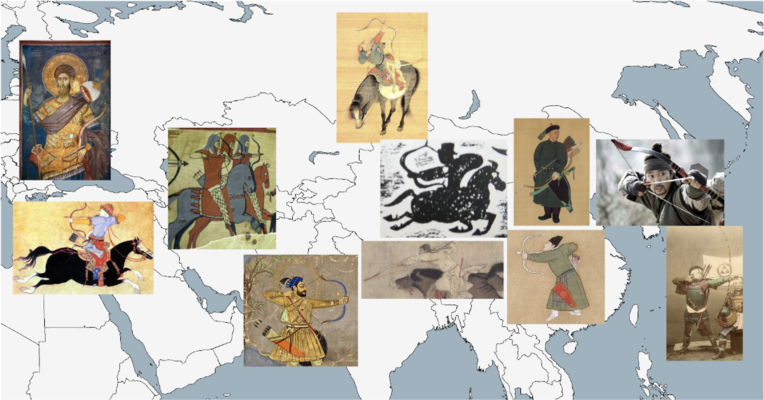What is Asiatic Archery?
by Justin Ma (full bio)
Learn to shoot Asiatic "horse" bows with the thumb ring and experience the martial prowess of the ancient steppe warriors!
This style was practiced throughout Eurasia by various cultures: Mongolians, Chinese, Koreans, Indians, Persians, Turks, Byzantines (Eastern Romans) and more! The map below shows archery images & artwork from some of these cultures.
A little background about myself: I am co-author of "The Way of Archery: A 1637 Chinese Military Training Manual" (Schiffer Publishing, 2015). The book is a translation and commentary of a classic, 17th-century Ming Dynasty military archery treatise. Through the experience of writing the book and teaching the style at our annual Chinese Archery Program, I have come to appreciate no only the depth and practicality of the style, but also the commonalities it shares with other styles of traditional archery.
In this post, we will briefly cover some elements that distinguish Asiatic archery from the more familiar Western recurve & traditional styles of archery.
Thumb Ring
Rather than using the fingers to pull the string, practitioners of Asiatic archer used the thumb to draw the string back. The primary advantage of the thumb draw is it allows the archer to stably handle the arrow in mobile situations (such as riding a horse). Specifically, after you have reinforced the thumb with 1--2 fingers, the index finger will lightly touch the side of the arrow nock, which will prevent the arrow from slipping off. In the heat of battle, the last thing you want is to drop your arrow accidentally!
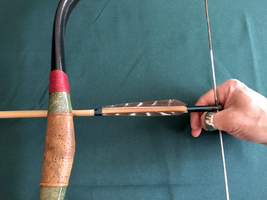
Drawing a bow string can exert a lot of pressure on a single digit, so practitioners of Asiatic archery typically protect their thumb using a thumb ring. Thumb rings were made from various materials, including metal, horn, jade, stone, bone, and leather. Nowadays you can find them made from plastics as well.
Thumb rings come in various shapes and sizes but typically fall into a few categories:
- Lipped rings: The lip is an extension of the ring
that protects your thumb pad as the string releases.
Lipped rings may optionally have a guard that prevents
the string from pressing into the skin of your thumb.
Pictured below (from left to right) are lipped rings
with: a single guard, a split guard, and no guard.
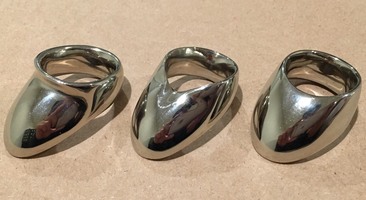
- Cylindrical rings: Primarily used by the Qing dynasty
Manchu archers. The cylindrical design made it easy to
switch between shooting a bow, then later grabbing a
melee weapon.
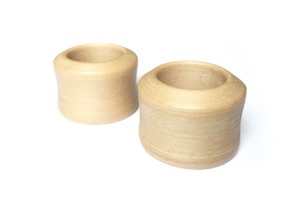
- Pronged rings: Unique to Korean archers, who called
it the "sugakji" and liked to use this with heavy bows
(though it is more difficult to get a clean release with
this design). You pull the string with the prong and use
1 or 2 fingers to reinforce the prong (unlike other
designs where you use 1--2 fingers to reinforce the
thumb). [Photo and sugakji ring by Jin Kim:
http://www.hellojinstudio.com]
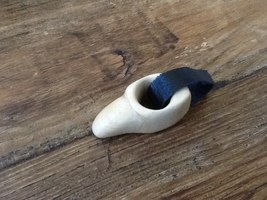
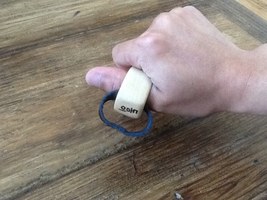
- Leather tabs/guards: Perhaps the earliest form of
thumb protection (though due to the ease at which leather
decays, we struggle to find archaeological specimens of
leather guards). Easy to make, but probably not does not
provide the most thumb protection for moderate to high
draw weights.
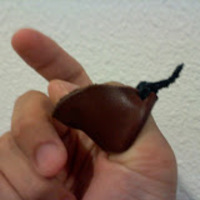
- Other rings: There are other styles of rings that do
not fit cleanly into the above categories. In fact, the
oldest ring archaeologists have found thus far is the
ring from the tomb of Fu Hao (dating to around 1200 BCE
in the Chinese Shang Dynasty). Fu Hao was a female
general and consort to the Shang king, and a tomb with
military artifacts was built in her honor. The rings
found in her tomb looks like a somewhat-cylindrical ring
but with a channel that allows it to be used like a
lipped ring with an extra large guard underneath.
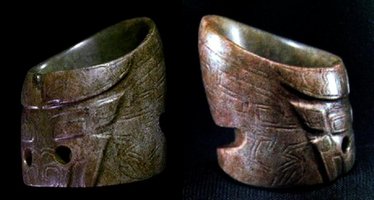
Asiatic Bow
In some respects, the Asiatic bow is very complex due to the variety of geometries their makers experimented with over the millenia, each with varying lengths, bends, and degrees of reflex. The illustration below gives you a sampling of the variety of shapes available in the Asiatic bow genre.
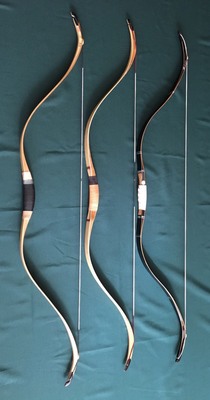
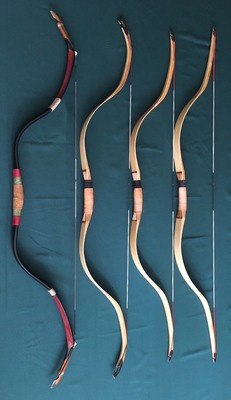

You will notice the bows have no shelves, no sights, no stabilizers. In comparison with modern compound and recurve bows, the Asiatic bow has a refreshing simplicity.
Your bow hand grip technique helps create a virtual "shelf" using your thumb. You will rely on more traditional forms of aiming, so the "sights" are not needed here. The bows themselves will feel surprisingly light in the hand compared to compound and recurve bows (which you may have handled before), so any "stabilization" will come from your well-executed form.
There are no accessories to blame for errant shots. Especially with this genre of bows, you as the archer have sole responsibility for your shot. And even if it is an issue with equipment, wasn’t it your responsibility as an archer to choose your equipment wisely?
Asiatic Military Technique
Techniques varied among the various Asiatic styles practiced. Even within a single culture, you can see quite a variety in technique. For example, within Chinese culture you had different schools that would debate on many details such as how to draw, how far to draw, how to release, what mindset to adopt, and so forth.
In the upcoming course, we introduce a military archery style described in a 17th century Ming-Chinese military archery manual. It features a long draw length (thumb ring draw past the ear), an upper lip anchor, and narrow triangle alignment of the shoulders and arms that is conducive to pulling heavy military bows.
Don't worry! We’re not going to make anybody pull heavy bows on their first day, but you can rest assured the technique you learn will be just the same as the ones the ancients used to pull 80#, 100#, and even heavier bows.
Of course, we should never sacrifice the integrity of our archery form for the sake of pulling a higher poundage. That said, we note the form used in military applications is very different from the target archery form practiced in the modern day, as the military form makes more symmetric use of the back muscle groups. In fact, the Chinese/Asiatic military archery form you will learn shares fundamentals with military/hunting archery forms from around the world, as all of these styles emphasize using all of the big muscles of the back to do the bulk of the work.
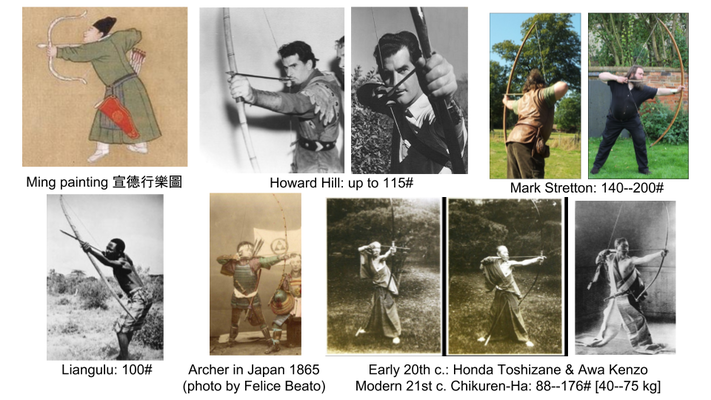
Conclusion
Hopefully this quick overview piques your interest in Asiatic archery, and we look forward to helping you learn more about it!
